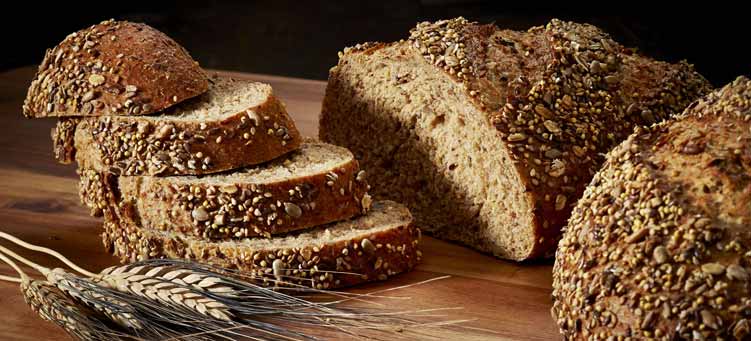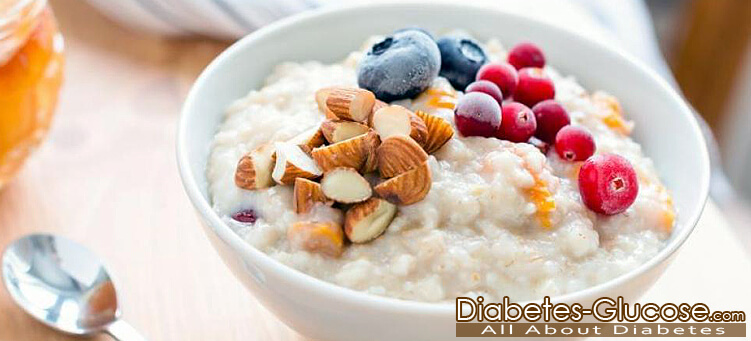The Best Breads for Diabetics
Is bread an option for people with diabetes?
Food may be one of life’s simple pleasures, but for people with diabetes, deciding what to eat can get complicated. Foods that contain a lot of carbohydrates can spike blood sugar levels. Carbohydrates are found in many different kinds of food, including desserts, grains, and bread. Giving up carbs completely isn’t realistic, healthy, or even necessary. What matters is that you’re aware of your carb intake and make nutritious food choices.
Breads can often be high in carbs. Some are overly processed, high in sugar, and filled with empty calories. Healthier options can be part of a satisfying meal plan for people with diabetes. If you’re trying to figure out which breads work best for diabetes management, this information may help.
Understanding diabetes
When a person has diabetes, their body doesn’t make or use enough insulin to process food efficiently. Without enough insulin, blood sugar levels can spike. People with diabetes may also have high levels of cholesterol and triglycerides. This means that it’s important to keep an eye on fat and sugar intake.
People with type 1 diabetes require insulin injections daily and follow a specific type of eating plan. This eating plan is geared towards keeping blood sugar levels low.
People with type 2 diabetes often follow an eating and exercise regimen geared towards reducing blood sugar. If diet and exercise aren’t enough to control blood sugar, insulin injections or oral medication may be a part of a daily regimen.
Creating a food plan, making smart nutritional choices, and watching carbohydrate intake is recommended for people with both types of diabetes.
How can meal plans help?
Creating a meal plan can help people with diabetes control blood sugar and provide satisfying nutrition. There isn’t a one-size-fits-all plan. It may help to try different ones out and see which you like best. Your doctor or dietitian can also help guide your choices and make recommendations.
Here are several meal plans to consider:
Carb counting
The carb counting method works by establishing a maximum number of carbs to eat at each meal. There isn’t one number for everyone. Each person’s carb intake should vary based on their exercise level and any medications they may be taking. The American Diabetes Association recommends starting with 45 to 60 grams of carbohydrate per meal.
This meal plan, like all others, requires portion control. You also need to learn which types of carbs to eat, as well as how much.
There are three kinds of carbohydrates:
- Complex carbohydrates, or starches, can be healthy and filling when eaten in appropriate amounts.
- Sugar isn’t beneficial because it spikes blood sugar and adds empty calories to meals.
- Fiber helps control blood sugar levels. The Joslin Diabetes Center recommends eating between 20 to 35 grams of fiber each day.
The plate method
The plate method doesn’t require carb counting. Instead, half of your plate should include non-starchy vegetables, such as broccoli, green peppers, or kale. One quarter of your plate should contain grains and starchy foods, such as bread. The remaining quarter should be filled with protein-rich foods.
Depending on your overall meal plan, you can add a serving of fruit daily. A low-calorie drink should complete your meal.
Exchange lists
Exchange lists group similar foods together so they can be substituted easily for each other. You can find an example exchange list here. Each food on the list has the same nutritional value. Breads are on the starch list. Each item on this list has approximately 15 grams of carbohydrates, 3 grams of protein, a small amount of fat, and 80 calories. One slice of bread represents one exchange.
How to make bread part of your meal plan
When deciding which breads to buy and which to avoid, make sure to read the nutritional information thoroughly.
The American Diabetes Association recommends choosing whole-grain bread or 100 percent whole-wheat bread instead of white bread. White bread is made from highly processed white flour and added sugar.
Here are some delicious and healthy breads to try:
- Toufayan’s Low Carb Pita Bread – You can’t have an authentic Mediterranean-style meal without pita pockets. This low-carb version has 16 grams of carbs and 7 grams of fiber per loaf.
- Food for Life’s 7 Sprouted Grains Bread – High in protein and fiber, this flourless bread has 15 grams of carbs per slice. Flavorful and filling, it’s perfect for breakfast, especially when toasted and coupled with poached eggs and berries. Other Food for Life breads and products are also good options.
- Alvarado St. Bakery’s Sprouted Wheat Multi-Grain Bread – This dense, rich bread gets its slight sweetness from molasses and honey. Despite the indulgent taste, it still packs a nutritional punch. Each slice has 15 grams of carbs, 5 grams of protein, and 2 grams of fiber.
Breads that are homemade, available at farmers markets, and made at local bakeries may be higher in fiber and lower in sugar. They will certainly be less processed than those on grocery store shelves. Processed foods are typically digested and absorbed faster, which can raise blood sugar levels.
With options like these, you may find it easier than you think to limit or remove less healthy breads from your meal plan. Consider eliminating high-carb options such as:
- Pillsbury’s Date Quick Bread and Muffin Mix – At 28 grams of carbohydrates and 14 grams of sugar per slice, you may want to reserve these for special occasions or for company only.
- Starbucks’s Butter Croissant – You’re probably better off eating breakfast at home than picking up this breakfast croissant with your morning coffee. Each has 32 grams of carbs, less than 1 gram of fiber, and 11 grams of saturated fat.
Outlook
For people with diabetes, healthy eating may take a little work. When it comes to choosing bread, reading labels and learning how to understand nutrition facts can put you on the right track. Look for bread without any added sugars, the lowest amount of sugar, and a high amount of fiber. A good rule of thumb is to look for a short ingredient list. Consider creating a meal plan, or talk to your doctor about other best practices for you.
Source: healthline.com




[…] selected to add a cup of legumes per day to their diet. The other half were told to try to eat more whole-wheat […]